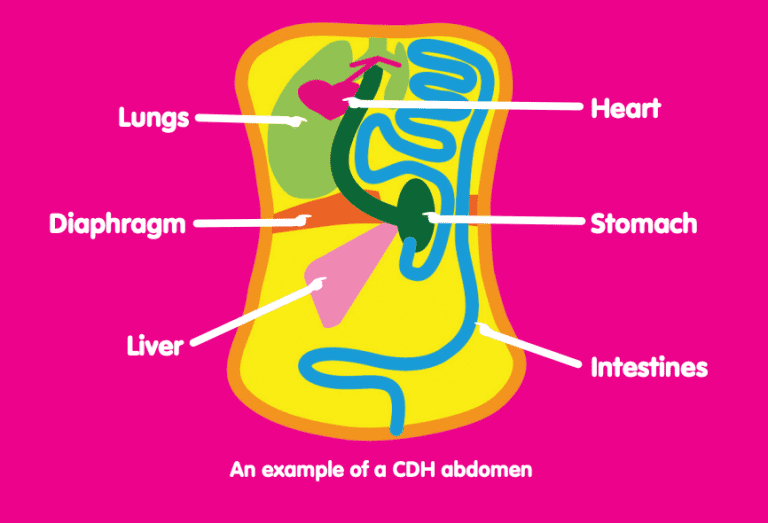- 0800 731 6991
- committee@cdhuk.org.uk
CDH is commonly diagnosed at the routine 20 week scan and sometimes as early as the 12 week routine scan. It is however, possible for baby to be diagnosed with CDH at any point after the 12 week scan right up until the final weeks of pregnancy and even after baby is born.
It is picked up by the person carrying out the scan (sonographer) when it appears organs are not where they should normally be, or there is something unusual about the scan. You will then be invited to attend another scan session to have the diagnosis confirmed.

Below are some of the signs that may be picked up on a scan:
CDH can sometimes be associated with a chromosomal disorder (although this is rare), such as Edwards Syndrome, Fryn’s syndrome and Cornelia-de-Lange syndrome to name a few. This would be confirmed by carrying out a Karyotype test, which is done by testing the amniotic fluid surrounding the baby. The procedure to obtain a sample of amniotic fluid for this test is called an amniocentesis.
Occasionally CDH is not picked up during routine scans and is diagnosed shortly after birth.
Extremely rarely CDH is diagnosed later in life during routine medical check ups or procedures, or following further herniation of abdominal contents.
The risk of recurrence in future pregnancies is extremely low and is given as a 2% increased risk. You can ask to be referred to a Genetic counsellor to discuss this small increased risk.

CDH UK is a registered charity in England and Wales (no. 1106065) and Scotland (no. SC042410) | Privacy Policy | Disclaimer | Glossary